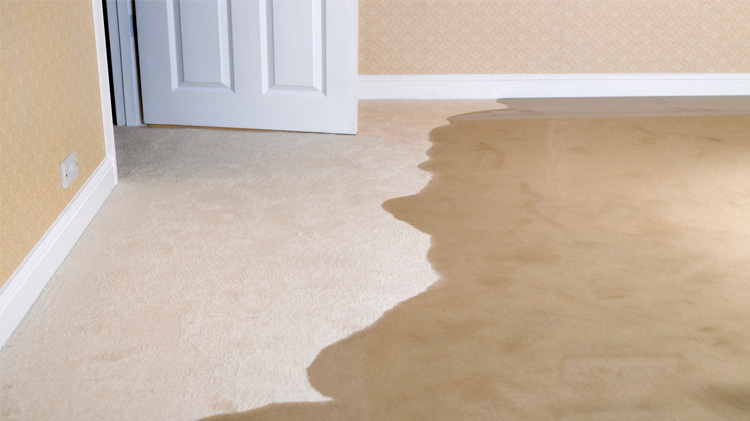Water damage can turn a peaceful home into a place of stress and uncertainty. Damp air, peeling paint, and the unmistakable smell of mould soon make themselves known.
Acting quickly with a calm, methodical plan can restore order before lasting harm takes hold.
1. Find the Cause and Make It Safe
Before starting any cleaning, you need to discover why the water appeared in the first place. It may come from a burst pipe, a leaking drain, heavy rainfall, or even groundwater pressure pushing through small cracks.
The sooner you identify the source, the easier it becomes to stop further harm.
Turn off the electricity to the basement and nearby circuits. Water and power are never a safe mix, so make sure the area is completely secure before stepping in. Open doors and windows to bring in fresh air and clear out that heavy, stale scent.
Moreover, inspect the space closely. Look for cracks along the walls, flaking paint, and soft patches underfoot that might suggest more profound problems.
If the structure seems damaged or unstable, contact a professional before continuing. Also, photograph the affected areas for insurance purposes and to help you plan any future repairs.
Once you have contained the source, focus on preventing more water from entering. You might need to seal a crack temporarily, redirect an outdoor drain, or shut off a main valve.
Taking these early steps ensures the clean-up that follows is effective and lasting.
2. Remove Water and Damaged Items
After securing the area, begin removing standing water right away.
For deep flooding, a submersible pump is the most efficient choice. It moves water quickly, saving you hours of manual labour. For smaller puddles, a mop, bucket, or wet vacuum cleaner will be enough.
Start at the lowest point of the floor and work steadily toward the exit. Always keep electrical devices well away from water. Once most of the water is gone, lift and remove soaked belongings such as rugs, furniture, boxes, and old insulation.
These items trap moisture and slow the drying process. Some wooden furniture might recover if cleaned promptly, but carpets and fabrics are rarely worth saving once saturated. Move everything you remove to a well-ventilated area or outdoors to dry.
If the basement has been flooded for more than a day, wear gloves and a mask while handling items, as mould may have begun to form.
Separate what can be restored from what needs to be discarded. Clearing space early makes the following stages much faster and safer.
3. Dry the Basement Thoroughly
Drying the basement is vital for preventing further damage.
Bring in as much airflow as possible by placing fans in different corners and running a dehumidifier around the clock. These tools pull moisture from the air and help dry the walls and floor evenly.
Keep doors and windows open when the weather is dry. Natural ventilation often works better than artificial heat, which can cause wood to warp or plaster to crack. If possible, position fans to create cross-ventilation so that fresh air circulates continuously.
You can also use simple household items to help. Trays filled with salt, silica gel, or cat litter absorb lingering moisture from hard-to-reach corners. Check the air every few hours to see how it feels. It should become lighter and cleaner as the drying continues.
Furthermore, touch the surfaces to ensure they are no longer damp. This stage can take a full day or two depending on the level of saturation. Patience is key. If you rush, hiding damp spots could lead to mould growth later.
When drying delicate or high-value items, such as furniture or rugs, consider getting specialised help. Expert cleaning services use equipment designed to restore materials safely, remove odours, and prevent permanent stains.
Once the air feels fresh again, you can move on to the cleaning phase.
4. Clean, Disinfect, and Refresh
After everything has dried, begin cleaning every visible surface.
Mix a mild household detergent with warm water and scrub the walls, floor, and any remaining fixtures. This step removes dirt and bacteria left by contaminated floodwater.
Next, prepare a disinfectant by combining one part bleach with ten parts water. Wipe down all hard surfaces, including the corners, baseboards, and pipes. Wear protective gloves, keep the area ventilated, and avoid breathing in fumes.
Pay special attention to cracks, gaps, and shadowed corners, where mould might still linger. If plasterboard, insulation, or carpet remains damp or smells musty, it should be replaced entirely. These materials cannot be cleaned deeply enough to remain safe.
Once disinfected, rinse with clean water and let the surfaces dry again. Use baking soda or natural odour absorbers to remove lingering scents. When the basement feels fresh and clean, consider painting the walls with waterproof paint or applying a clear sealant.
These finishing touches brighten the space and act as a barrier against future dampness. Cleaning thoroughly is about more than appearance—it protects your health and preserves the integrity of your home.
5. Prevent Future Water Problems
Keeping your basement dry is a matter of prevention as much as repair.
Start outside by clearing gutters and downspouts so that rainwater flows freely away from the house. Blockages cause overflows that can easily find their way into lower walls.
Make sure the ground around your home slopes slightly away from the foundation. Even a gentle incline helps water run off in the right direction. In addition, check your drains and outdoor taps for leaks and fix any that drip steadily after rain.
Inside, inspect pipes and joints often to catch minor leaks early. Seal any visible cracks using waterproof filler. You can also install a sump pump to collect and expel water during heavy rainfall, providing an extra layer of protection.
For households in flood-prone areas, consider adding a backflow valve to prevent water from entering through drains.
Small steps like these can spare you major repair work later. During humid seasons, run a dehumidifier to maintain steady airflow and dryness. Finally, store boxes and valuables on raised shelving rather than directly on the floor.
A little preparation now saves stress in the future. Routine maintenance is far easier than facing another flood.
Conclusion
A water-damaged basement seems overwhelming at first, but calm action brings quick results.
By finding the cause, drying completely, and cleaning with care, you protect your home from future harm.
With the right habits and attention, the space will remain dry, bright, and dependable for years to come.



